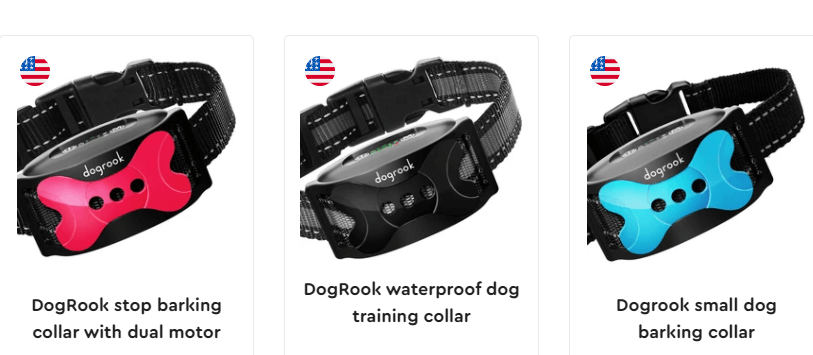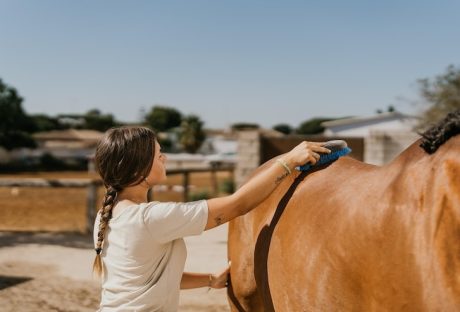To begin with, let’s analyze the principle of the bark collar. The principle of the collar is based on “negative reinforcement”: as soon as the dog starts barking, the device in one way or another causes the animal discomfort. In many models, the intensity of exposure can be adjusted. Usually, they start with the weakest influences, but if they become ineffective, the power is increased.
Most pets understand the connection between barking and punishment over time and then break the habit. However, an immediate result cannot be expected: at first, the dog will, from time to time, forget about the collar, especially if frequent barking has become a norm for it.
The Bark Collar Appearance
A receiver with electronic components, including a bark indicator and a device for influencing the dog, is attached to the tape. The receiver may have a power adjustment wheel, as well as a battery indicator. Some models are equipped with GPS tracking devices. The receiver weighs from 25 to 120 g. The larger the dog, the larger the device should be.
The receiver detects barking using a vibration sensor or microphone. Both types have their drawbacks: the former may react to scratching behind the ear, yawning, or throat movement while drinking, while the latter may react to other dogs barking. A bark collar with a microphone device makes mistakes more often.
You may also like: 10 Reasons Why Your Dog Can Breathe Fast?
Whom Does It Fit?
There are collars for both large and small dogs. They are especially relevant for breeds that are naturally prone to frequent barking: Spitz, Yorkshire terriers, etc.
Before proceeding with the choice of a bark collar, it is necessary to consult with a dog handler. Sometimes you can get rid of the problem without resorting to the device. In addition, in case of hysterical disorders in a dog, such a collar will only worsen the situation.
The collar must not be used for more than 8-12 hours a day. Most dogs stop vocalizing for no reason after just a week. However, to fully consolidate the result, using the device for up to six months is recommended. If your dog has become nervous or depressed because of the collar, you should contact a dog handler.
Varieties Of Bark Collar
Like the harness and the other pets’ accessories, bark collars are available in different shapes and sizes. The bark collar’s size and features are different from the larger breeds for the smaller breed dogs.
When you are going to purchase the bark coolers for your pets, you have first to understand the necessity of the bark collars and then what are the suitable types of bark collars. For example, for the smaller breeds, the minor tingling sensation is enough to stop the barking. But for the larger and aggressive breeds, the collars must be much more powerful than the smaller ones.
Here are a few options and the types which are available for your pet dog.
- Ultrasonic
- Gas and spray
- Vibrating
- Electrical
- Combined
You may also like: Smaller Sized Meal Portions for Dogs
How To Use The Bark Collar?
To begin with, the dog must get used to the bark collar, so it is kept off for the first 2-3 weeks. It should be positioned higher than the usual model and fit snugly to the skin.
When you turn it on for the first time, you must personally monitor how the pet reacts to the triggered device. If the dog is very scared (to the point of hysterics), the collar must be turned off and removed immediately and then put on again the next day. Over time, the animal will begin to respond more adequately simply by stopping the barking.
Conclusion:
Many times barking is becoming a habit for pets. The bogs barking is like an alarm. When your dog is developing a barking practice, you can not find the real cause behind his barking, and every time he starts barking, you will think there is some issue with security, but you can not find the real cause behind the barking. This is the main reason the owners are taking the help of the bark collar to control the dog’s barking habits.
Read Also:
























